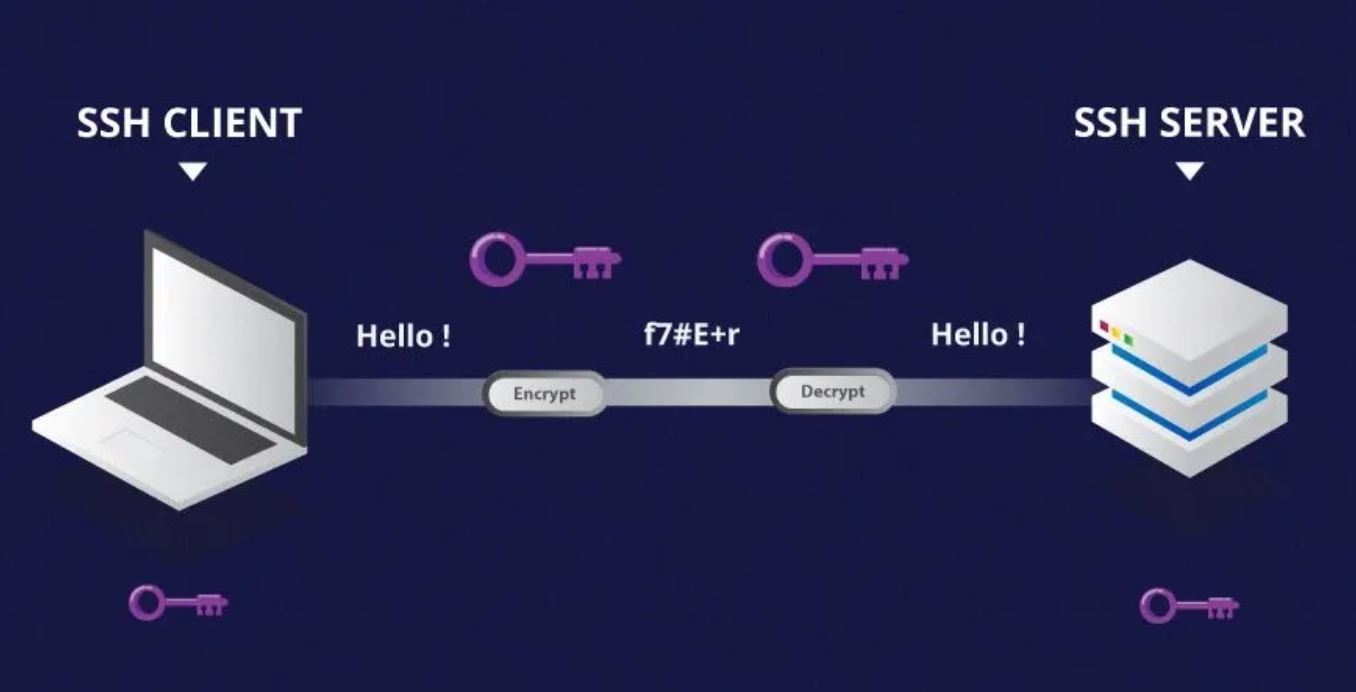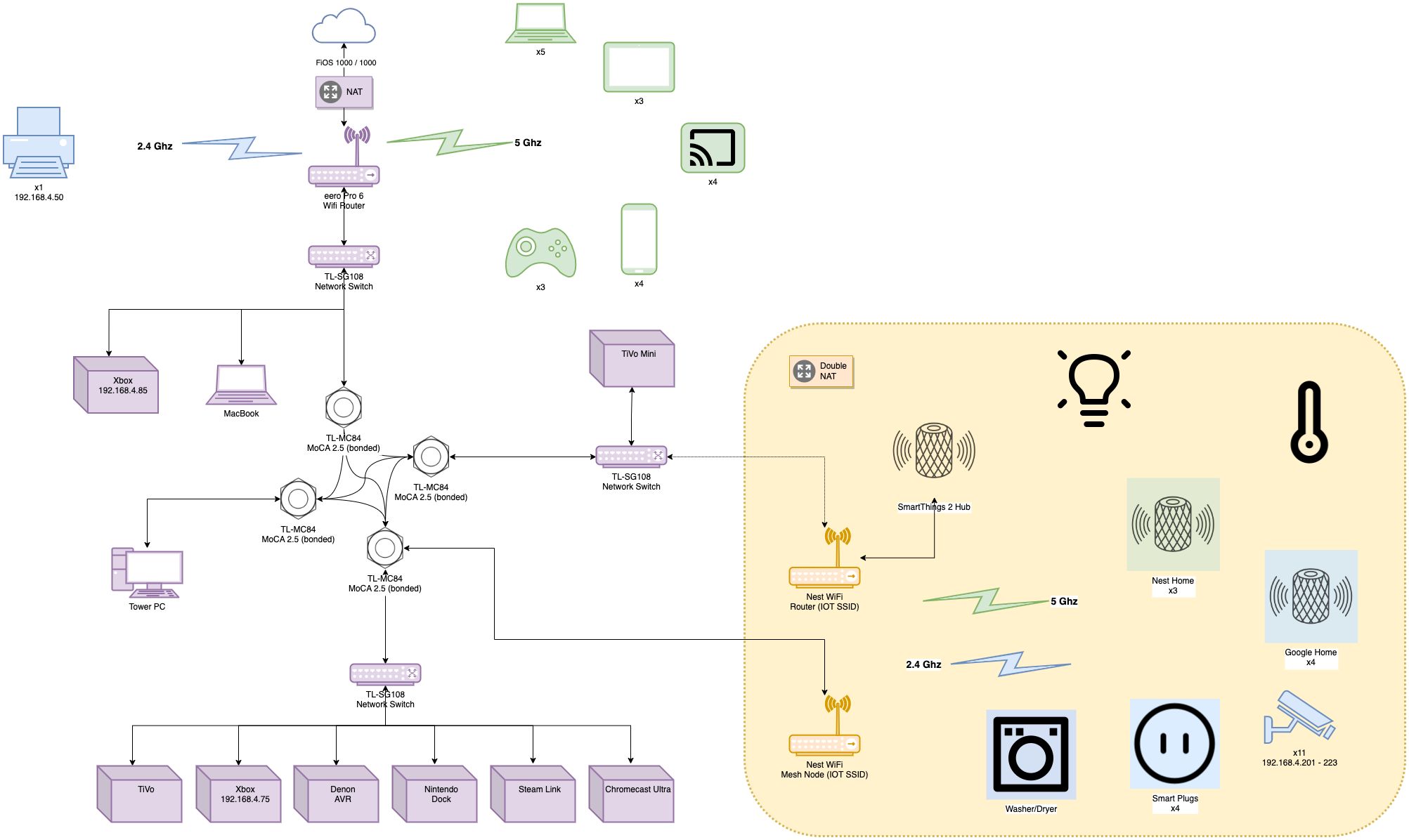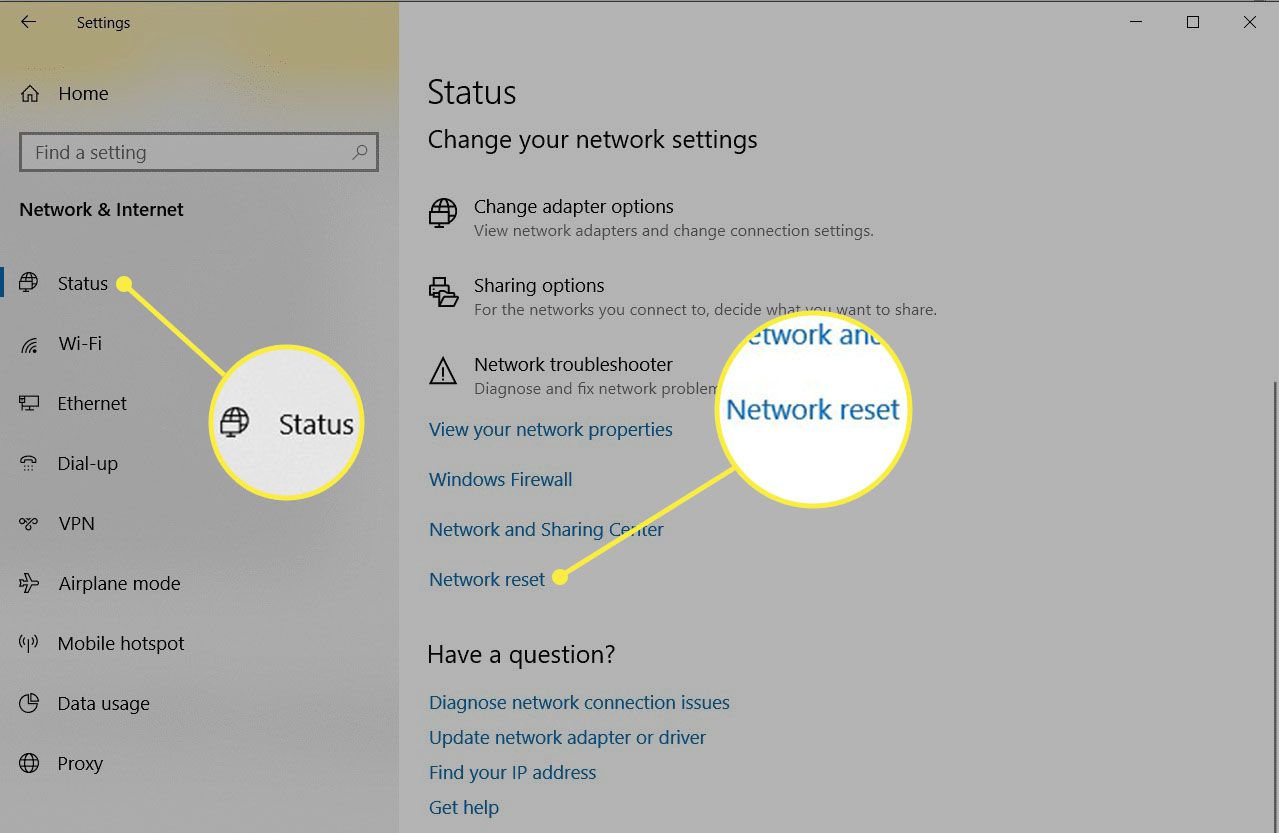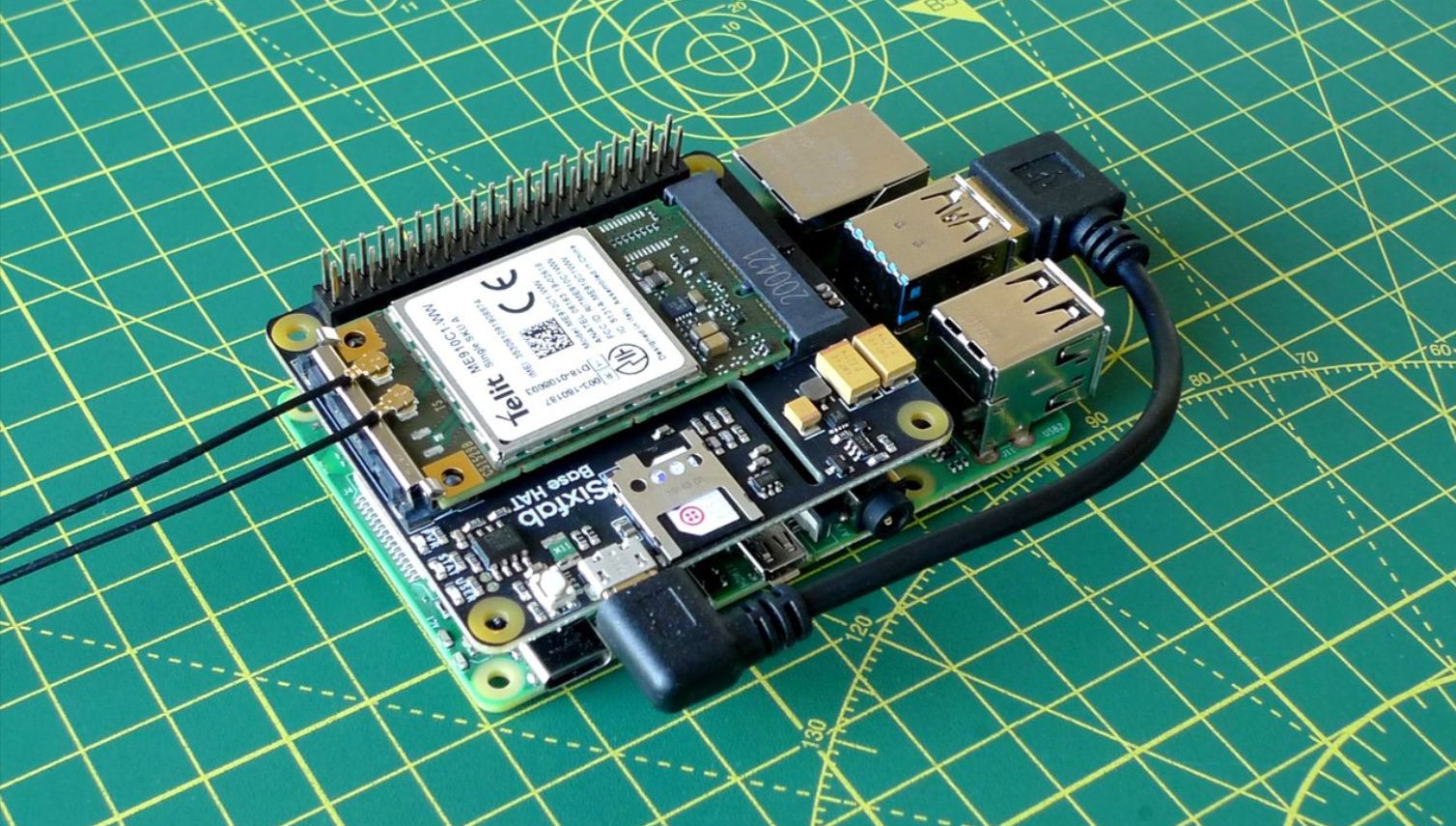Introduction
Welcome to the exciting world of Internet of Things (IoT), where connectivity and smart devices are transforming the way we live and work. As IoT gains momentum, the need for secure and efficient communication between devices becomes paramount. This is where Secure Shell (SSH) comes into the picture. In this article, we will explore what SSH is and how it plays a crucial role in the IoT landscape.
SSH, originally designed for remote login and secure file transfer, has evolved to become an essential protocol in the IoT ecosystem. It provides a secure and encrypted channel for communication between IoT devices and their managing systems. By establishing a secure connection, SSH ensures the confidentiality, integrity, and authenticity of data exchanged between devices, making it a trusted choice for securing IoT deployments.
As the IoT ecosystem expands, the number of connected devices grows exponentially, leading to a more complex and vulnerable network. The seamless integration of SSH in IoT helps alleviate these security concerns by providing a robust and reliable communication framework. Through SSH, device administrators can remotely access and manage devices securely, ensuring efficient and reliable IoT device management.
Furthermore, SSH goes beyond basic encryption and authentication. It offers additional security features such as port forwarding, key-based authentication, and public key infrastructure (PKI) integration. These features enhance the overall security posture of the IoT network, making it resilient to potential cyber threats and attacks.
In the next sections, we will delve deeper into how SSH works, its benefits in IoT deployments, and the considerations to keep in mind while implementing SSH. We will also explore some implementations of SSH in IoT applications, showcasing its real-world usage and potential.
Definition of SSH
Secure Shell (SSH) is a cryptographic network protocol that provides a secure and encrypted channel for communication between devices over an unsecured network. It was initially developed as a replacement for the older, less secure protocols like Telnet and rlogin. SSH ensures that data transmitted between devices remains confidential and cannot be accessed or tampered with by unauthorized parties.
At its core, SSH uses a combination of symmetric and asymmetric encryption algorithms to establish a secure connection. The client and server negotiate the encryption algorithms and keys during the SSH handshake process, ensuring that both parties agree on a common encryption scheme.
SSH incorporates various security mechanisms, including data encryption, integrity checking, and user authentication. Data encryption involves encrypting the information exchanged between devices, making it unreadable to anyone intercepting the communication. Integrity checking ensures that the data is not modified or tampered with during transmission. User authentication involves verifying the identity of the user or device attempting to establish an SSH connection, preventing unauthorized access.
One of the significant advantages of SSH is its versatility. It supports various authentication methods, including password-based authentication, public key authentication, and even two-factor authentication, providing flexibility to meet different security requirements. Public key authentication, in particular, is widely used in SSH implementations, where a public key is stored on the server and the corresponding private key is held by the client. This keypair-based authentication adds an extra layer of security and convenience.
SSH operates on the client-server model, where the client initiates the connection to the server. Once the SSH connection is established, the client and server can securely exchange data and execute commands. It essentially provides a secure shell or terminal session to the remote device, enabling remote management and administration.
Overall, SSH offers a secure and reliable method for remote access and secure communication between devices, making it an integral part of the IoT ecosystem. Its encryption, authentication, and data integrity features make it an essential protocol for securing IoT deployments.
How SSH Works
Understanding how Secure Shell (SSH) works is essential to grasp its significance in ensuring secure communication in IoT deployments. Let’s dive into the inner workings of SSH.
SSH works through a client-server architecture. When a client wants to establish an SSH connection with a server, it starts by sending a connection request. The server responds by initiating the SSH handshake process. During this handshake, the client and server negotiate various parameters, including encryption algorithms, authentication methods, and keys.
Once the handshake is complete, the client and server establish a secure channel called the SSH tunnel. Any data exchanged between them is now encrypted using the agreed-upon encryption algorithms. This encryption ensures that even if the data is intercepted, it remains unreadable to unauthorized individuals.
SSH utilizes two primary encryption algorithms: symmetric encryption and asymmetric encryption. Symmetric encryption involves using the same key to both encrypt and decrypt the data. This process is relatively fast and efficient, making it ideal for encrypting large amounts of data. Asymmetric encryption, on the other hand, uses a pair of keys, a public key and a private key, to encrypt and decrypt the data. The public key is shared with the server, while the private key remains securely stored on the client’s device.
During the SSH handshake, the client and server agree on an encryption algorithm for symmetric encryption and exchange the necessary keys. Once the symmetric encryption is set up, the client generates a session key that is used to encrypt the data. This session key is encrypted using the server’s public key and sent to the server.
Upon receiving the encrypted session key, the server uses its private key to decrypt it. The server and client now share the same session key, allowing them to securely encrypt and decrypt the data transmitted between them.
In addition to encryption, SSH also employs authentication to verify the identity of the client and server. The client provides their credentials or public key to the server, who then validates them. This authentication process ensures that only authorized entities can establish an SSH connection.
Overall, SSH combines the power of encryption and authentication to create a secure channel for communication between devices. The encryption algorithms and key exchange ensure the confidentiality of data, while the authentication mechanisms prevent unauthorized access.
Benefits of Using SSH in IoT
Secure Shell (SSH) offers a range of benefits when it comes to implementing secure communication in IoT deployments. Let’s explore some of the key advantages of using SSH in IoT.
1. Encryption and Data Confidentiality: One of the primary benefits of SSH is its ability to encrypt data exchanged between devices. With SSH, sensitive information remains confidential, even if intercepted, ensuring the privacy and security of IoT communications.
2. Authentication and Access Control: SSH provides robust authentication mechanisms, allowing only authorized individuals or devices to establish a connection. This prevents unauthorized access and enhances the overall security of IoT devices and networks.
3. Remote Device Management: SSH enables remote access and management of IoT devices, even across different geographic locations. Device administrators can securely execute commands, configure settings, and troubleshoot issues, saving time and effort.
4. Standard Protocol Support: SSH is a widely accepted and well-established protocol in the industry. It is supported by a variety of operating systems and devices, making it a reliable choice for secure communication in heterogeneous IoT environments.
5. Port Forwarding: SSH allows for secure port forwarding, enabling devices behind firewalls or in private networks to be accessible from the outside. This feature facilitates remote access to IoT devices without compromising network security.
6. Public Key Authentication: SSH supports public key authentication, which offers an extra layer of security compared to password-based authentication. Public key authentication mitigates the risk of password-related vulnerabilities, such as password leaks or brute-force attacks.
7. Flexibility and Customization: SSH is highly customizable, giving administrators the freedom to configure various parameters according to their specific security requirements. This adaptability makes SSH a versatile and scalable solution for securing IoT deployments.
8. Integration with Existing Infrastructure: SSH can seamlessly integrate with existing infrastructure and security tools. This interoperability reduces complexity and allows organizations to leverage their current security measures without significant modifications.
9. Open Source Implementations: SSH has open-source implementations, which provide transparency and allow for community-based scrutiny. This helps identify and address any potential security vulnerabilities promptly.
10. Compliance with Security Standards: Many security frameworks and standards, such as ISO 27001 and NIST, recommend the use of SSH for secure communication in IoT environments. Implementing SSH can help organizations meet regulatory and compliance requirements.
By leveraging the benefits of SSH, organizations can ensure secure and efficient communication within their IoT ecosystems, safeguarding sensitive data and maintaining the integrity of their IoT networks.
SSH vs Other Protocols in IoT
When it comes to secure communication in IoT deployments, there are several protocols available, each with its own strengths and limitations. Let’s compare Secure Shell (SSH) with other commonly used protocols in the IoT landscape to understand the unique benefits it brings.
1. SSH vs HTTP: While HTTP is widely used for web-based communication, it lacks the secure and encrypted nature of SSH. Unlike HTTP, SSH provides end-to-end encryption, ensuring the confidentiality and integrity of data exchanged between IoT devices. Additionally, SSH offers authentication mechanisms, preventing unauthorized access compared to HTTP, which relies on simple username and password authentication.
2. SSH vs MQTT: MQTT (Message Queue Telemetry Transport) is a lightweight messaging protocol commonly used in IoT applications. While MQTT provides efficient and low-bandwidth communication, it does not inherently provide encryption or authentication features. In contrast, SSH ensures secure communication and strong authentication, making it suitable for scenarios where data confidentiality and device authentication are critical.
3. SSH vs CoAP: CoAP (Constrained Application Protocol) is designed specifically for resource-constrained IoT devices. While CoAP offers low overhead and efficient communication, it lacks built-in encryption and authentication capabilities. SSH, on the other hand, provides robust encryption and authentication, making it a more secure choice for protecting sensitive IoT data.
4. SSH vs TLS/SSL: Transport Layer Security (TLS) and Secure Sockets Layer (SSL) are widely used protocols for securing communication on the internet. While SSH and TLS/SSL both provide encryption and authentication, there are some differences. SSH is typically used for remote access and management, while TLS/SSL is primarily used for securing web-based communication. Additionally, SSH tends to have fewer overheads and is considered simpler to implement.
5. SSH vs IPSec: Internet Protocol Security (IPSec) is a widely used protocol suite for secure communication at the network layer. While IPSec provides secure communication between networks, SSH operates at the application layer and is specifically designed for secure remote access and management. SSH offers more granular control and flexibility, making it an ideal choice for securely managing IoT devices.
6. SSH vs SNMP: Simple Network Management Protocol (SNMP) is commonly used for network management. While SNMP provides management capabilities, it lacks encryption and secure communication features. In contrast, SSH provides secure remote access and communication, ensuring the confidentiality and integrity of data exchanged between IoT devices and management systems.
In summary, although there are various protocols available for IoT communication, SSH stands out for its strong encryption, authentication mechanisms, and secure remote access capabilities. While other protocols may offer specific advantages in terms of efficiency or lightweight communication, SSH provides a comprehensive security solution for IoT deployments, ensuring data privacy, integrity, and access control.
Security Considerations with SSH in IoT
When implementing Secure Shell (SSH) in Internet of Things (IoT) deployments, there are several important security considerations to keep in mind. These considerations help ensure the integrity, confidentiality, and availability of data exchanged between IoT devices. Let’s explore some key security considerations with SSH in IoT.
1. Secure Key Management: Proper key management is crucial for SSH security. Generating and storing cryptographic keys securely is essential to prevent unauthorized access to devices. Keys should be protected with strong passphrases and stored in secure locations to mitigate the risk of key theft or misuse.
2. Two-Factor Authentication: Implementing two-factor authentication (2FA) adds an extra layer of security to SSH connections. By requiring a second form of authentication, such as a hardware token or biometric verification, even if the password or private key is compromised, an attacker cannot gain unauthorized access without the second authentication factor.
3. Regular Security Updates: Keeping SSH software and firmware up to date is critical to address any vulnerabilities that may be discovered over time. Regularly applying security updates and patches helps protect against known security risks and ensures that the latest security enhancements are applied to the SSH implementation.
4. Network Segmentation: Isolating IoT devices in separate network segments helps contain potential security breaches. By segmenting the network, compromised devices or unauthorized access are less likely to propagate to other parts of the network, reducing the impact of a security incident.
5. Monitoring and Logging: Implementing comprehensive monitoring and logging capabilities allows for the detection and analysis of any suspicious activities or potential security breaches. Monitoring SSH connection attempts, failed login attempts, and other log data can assist in identifying and responding to security incidents promptly.
6. Intrusion Detection and Prevention: Deploying intrusion detection and prevention systems (IDS/IPS) can help detect and mitigate unauthorized SSH access attempts or any malicious activities. These systems monitor network traffic and can block or alert upon detection of suspicious patterns or known attack signatures.
7. Limited Privileges: Assigning the principle of least privilege ensures that IoT devices are granted only the necessary permissions required to perform their intended functions. By limiting privileges, the potential impact of a compromised device or a malicious actor gaining access to the device is minimized.
8. Reducing Attack Surface: Disable unnecessary SSH services or features that are not required for the functionality of IoT devices. This reduces the attack surface and limits potential vulnerabilities that can be exploited by attackers.
9. Vulnerability Assessments and Penetration Testing: Regular vulnerability assessments and penetration testing should be conducted to identify potential weaknesses in the SSH implementation, configuration, or device firmware. This helps organizations proactively address any security flaws and strengthen the overall security posture of their IoT infrastructure.
10. Encryption Algorithms and Key Length: When configuring SSH, ensure that strong encryption algorithms are used and that key lengths are appropriate. Using outdated or weak encryption algorithms may weaken the security of the SSH connection. It is important to use encryption algorithms and key lengths recommended by industry best practices and security guidelines.
By considering these security measures, organizations can enhance the overall security of their IoT deployments and ensure that SSH is implemented in a way that safeguards sensitive data and provides secure remote access and management capabilities.
SSH Implementations for IoT Devices
Implementing Secure Shell (SSH) in Internet of Things (IoT) devices requires careful consideration of the hardware and software capabilities of the devices. Let’s explore some common SSH implementations for IoT devices.
1. OpenSSH: OpenSSH is one of the most popular and widely used open-source implementations of SSH. It provides a full-featured suite of tools for secure remote access, file transfer, and tunneling. OpenSSH is available for various operating systems, including Linux, Unix, and Windows, making it compatible with a wide range of IoT devices and platforms.
2. Dropbear SSH: Dropbear SSH is a lightweight and efficient SSH implementation designed specifically for embedded systems and resource-constrained devices. It is known for its small memory footprint and low computational overhead, making it suitable for IoT devices with limited resources.
3. libssh: libssh is a C library that provides SSH protocol services and functionality. It is designed to be lightweight and portable, making it suitable for IoT devices running on different hardware architectures. libssh offers both client and server functionality, allowing IoT devices to act as SSH clients or servers as required.
4. wolfSSH: wolfSSH is an open-source SSH library specifically optimized for embedded systems and IoT devices. It is designed to be small, fast, and efficient, making it ideal for resource-constrained devices. wolfSSH supports various cryptographic algorithms and provides features such as public key authentication and secure file transfer.
5. mbed TLS: mbed TLS (formerly known as PolarSSL) is a lightweight cryptographic library that includes support for the SSH protocol. It provides a secure and efficient implementation of SSH functionalities, making it suitable for IoT devices with limited resources. mbed TLS can be easily integrated into IoT firmware and applications.
6. MicroPython with uSSH: MicroPython is a lean and efficient implementation of the Python programming language specifically designed for microcontrollers and IoT devices. With the uSSH module, MicroPython supports SSH functionalities, allowing IoT devices to securely communicate and be managed remotely using SSH protocols.
7. Third-Party SSH Libraries: Alongside the above-mentioned implementations, there are various third-party SSH libraries available that offer SSH functionalities optimized for IoT devices. These libraries provide flexibility and compatibility with different device architectures and can be customized according to specific IoT requirements.
When selecting an SSH implementation for IoT devices, factors such as the device’s processing power, memory, and resource limitations should be taken into account. It is essential to choose an implementation that balances the security requirements, performance, and resource utilization of the IoT device.
Furthermore, organizations must ensure that the chosen SSH implementation is regularly updated and patched to address any security vulnerabilities that may arise. Regularly monitoring the security community and following best practices for secure SSH configuration and management is crucial to maintaining a robust and secure SSH implementation for IoT devices.
Examples of SSH in IoT Applications
Secure Shell (SSH) plays a significant role in various Internet of Things (IoT) applications, enabling secure remote access, management, and communication between IoT devices and their controlling systems. Let’s explore some real-world examples of SSH implementations in IoT applications.
1. Industrial Control Systems (ICS): In industrial environments, SSH is extensively used to secure remote access and management of IoT devices such as programmable logic controllers (PLCs), industrial gateways, and supervisory control and data acquisition (SCADA) systems. SSH ensures secure communication and control over critical infrastructure, reducing the risk of unauthorized access or tampering.
2. Smart Home Automation: In smart home automation, SSH is used for secure remote access and management of IoT devices such as smart hubs, security cameras, and home automation gateways. SSH allows homeowners to securely control and monitor their smart devices remotely, ensuring the privacy and security of their connected homes.
3. Healthcare: In healthcare applications, SSH provides secure communication between IoT devices used for monitoring patients’ vital signs, such as wearable devices, monitoring stations, and medical gateways. SSH ensures the confidentiality of patient data and allows healthcare providers to remotely monitor and manage devices securely.
4. Smart Energy Management: In smart energy management systems, SSH is used to securely manage and control IoT devices such as smart meters, energy storage systems, and renewable energy installations. SSH enables secure remote configuration, firmware updates, and data retrieval, enhancing the efficiency and reliability of energy management systems.
5. Intelligent Transportation Systems (ITS): SSH is utilized in IoT applications within intelligent transportation systems. It enables secure remote access and management of devices such as traffic signal controllers, vehicle telematics units, and roadside sensors. SSH ensures the integrity and reliability of transportation system operations.
6. Smart Agriculture: In smart agriculture, SSH is employed for secure remote monitoring and management of IoT devices, including soil sensors, weather stations, irrigation systems, and farm equipment. SSH allows farmers to access and control these devices securely, ensuring optimal crop conditions and resource utilization.
7. Smart Retail: In smart retail applications, SSH is used for secure remote access and management of IoT devices such as inventory management systems, point-of-sale terminals, and digital signage. SSH ensures secure communication and control, preventing unauthorized access and protecting sensitive customer information.
8. Smart City Infrastructure: In smart city applications, SSH secures remote access and management of IoT devices such as streetlights, environmental sensors, parking meters, and smart waste management systems. SSH provides secure communication and control, enhancing the efficiency and sustainability of urban infrastructure.
These are just a few examples of how SSH is used to enable secure and reliable communication and management in IoT applications. Implementing SSH ensures secure access to and control of IoT devices, protecting sensitive data and minimizing the risk of unauthorized access or tampering.
Conclusion
Secure Shell (SSH) serves as a cornerstone for secure communication and management in the Internet of Things (IoT) landscape. Its ability to provide encryption, authentication, and secure remote access makes it an invaluable protocol for securing IoT deployments.
By implementing SSH in IoT devices, organizations can ensure the confidentiality, integrity, and availability of data exchanged between devices. SSH facilitates secure communication even over untrusted networks, protecting sensitive information and mitigating the risk of unauthorized access.
The use of SSH in IoT applications extends across various industries. From industrial control systems to smart homes, healthcare, energy management, transportation, agriculture, retail, and smart city infrastructure, SSH plays a vital role in securing remote access, management, and communication in IoT environments.
When implementing SSH in IoT devices, organizations must adhere to best practices in key management, authentication, network segmentation, monitoring, and vulnerability assessments. Regularly updating and patching SSH implementations helps address any security vulnerabilities and ensures that the latest security enhancements are applied.
As the IoT ecosystem continues to grow, the importance of secure communication and management becomes increasingly crucial. SSH provides a robust and reliable framework for achieving this, offering strong encryption, authentication mechanisms, and secure remote access capabilities.
In conclusion, SSH plays a vital role in securing IoT deployments by providing a trusted and secure channel for communication. By embracing SSH in IoT applications, organizations can enhance the security and resilience of their IoT infrastructure, safeguard sensitive data, and meet regulatory compliance requirements. SSH empowers businesses to leverage the potential of IoT technology while maintaining data privacy, integrity, and confidentiality.

























